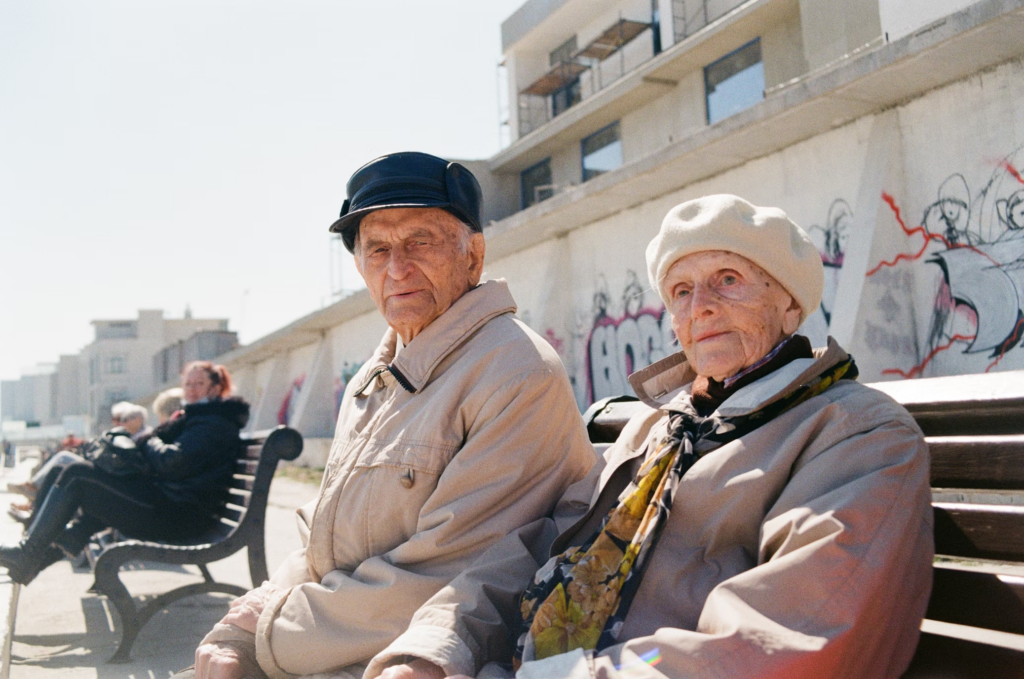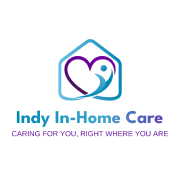
Maintaining the health, independence, and general quality of life of older persons depends on fall prevention in great part. Thousands of seniors fall every year, causing major injuries, hospitalizations, and even loss of independence. One of the best ways to lower fall risks is to participate in preventive exercise programs meant to increase muscle strength and balance.
Fall prevention also depends much on household changes. By installing nonslip mats, stair rails, grab bars, and nonslip mats, in addition to improving lighting, falls might be greatly less likely. Furthermore, underscoring the need for frequent medication reviews, seniors taking five or more drugs are at significant risk because of side effects, including dizziness or sleepiness.
Strength and balance exercises, a healthy diet, and regular vision and hearing exams all fit a well-rounded fall prevention plan. These cooperative initiatives guarantee seniors can lead more active and safer lives.
Analyzing Senior Fall Statistics

With about 44,000 hospitalizations in a single year, falls rank first among the causes of injury-related hospitalizations among those over 65. Unbelievably, at least one-third of adults 65 years of age and above fall yearly; many fall more than once.
Older persons who fall once are twice as likely to fall again; over 3 million seniors are seen in emergency departments annually for fall-related injuries. Of those hospitalized, 62% are women, underscoring a gender gap in fall events. These numbers support the need for aggressive prevention of falls among older adults.
Typical Reasons Older Adults Fall

Falling is more likely in age-related conditions, including poor vision, cognitive decline, slower reaction time, and decreased limb sensation. Further raising this susceptibility are muscle weakness, joint stiffness, and a lack of physical activity.
Particularly in those taking five or more drugs, medication-related adverse effects can produce vertigo or imbalance. Fall risks include loose rugs, damp flooring, and poor lighting, which can greatly increase risk.
Even for seniors who are usually energetic and steady, temporary medical illnesses like the flu or recovery from surgery can increase their chance of falling.
Medical Alert Systems for Seniors:
Medical alert systems offer a reliable safety net for elders, ensuring 24/7 access to emergency response services. For seniors as well as their families, these systems provide peace of mind and help to preserve independence.
Wearable alert devices notify emergency contacts and automatically detect falls. For high-risk seniors especially, this capability is quite helpful since it provides instant help should an accident occur.
Medical Alert System Benefits
Round-the-clock surveillance and instant assistance during an emergency define medical alert systems. These systems help seniors be more independent while also lowering living-alone-related anxiety.
Through quick response, high-quality alert systems identify falls and reduce the degree of occurrences. The most dependable systems are only found through research and actual user testing.
Selecting the Appropriate System
Good home safety calls for placing professionally anchored grab bars around toilets and bathtubs, utilizing nonslip mats in damp places, and improving visibility with strong lighting and nightlights.
Strength-oriented exercise programs help balance and complement alarm systems to prevent falls. Review your home’s hazards often to eliminate clutter and loose rugs.
Homes Safety Guidelines

The foundation of fall prevention is building a safer house. Appropriate lighting lowers nighttime falls, particularly in bathrooms, hallways, and bedrooms, including nightlights in hallways and bathrooms.
Simple yet powerful interventions are hanging grab bars in restrooms and either fastening or eliminating loose rugs. Maintaining the cleanliness of walkways from clutter and cords reduces trip hazards even further. Indoor stability increases when one wears supportive shoes with slip-resistant soles rather than socks or loose slippers.
Room-by-Room Safety Modifications
Clear living rooms of unneeded objects and ensure furniture is at an accessible height for straightforward use. Eliminate loose rugs or provide nonslip backing to prevent slips.
Install handrails on both sides of staircases and add grab bars in high-risk places. Enhance overall illumination, particularly around pathways and stairs, to improve visibility.
The role of exercise and physical activity

Regular exercise improves strength, balance, coordination, and flexibility, therefore drastically lowering fall risk. Seniors would find great choices in walking and tai chi.
Usually found in gyms or community centers, preventive exercise programs are especially meant to concentrate on balance and muscle strength. Seniors are advised to follow these routines a minimum of three times a week for at least twelve weeks. Chair stands, and similar home exercises help to retain lower body strength, which is vital for stability.
Activities to Boost Balance
Three times a week, you should do balance exercises, including standing on one foot and walking heel-to-toe. These easy exercises may be done at home, without equipment, and call for basic knowledge.
Those looking for more regimented exercises are advised to supervise physical therapy and tai chi. A physical therapist can create a customized program depending on a particular ability.
Senior Strength-Building Exercise
Walking heel-to-toe and tai chi are among the strength-building exercises that assist in reducing falls and enhancing muscle coordination. Community classes offer ordered direction and encouragement.
Designed specifically for each person’s needs, physical therapists can also create workouts stressing balance and muscle strength for the best results.
Vision and Hearing: Crucial Exams
Essential components of fall prevention are vision and hearing tests. Even modest hearing loss increases the risk of a fall three-fold. Early resolution of these problems will significantly improve mobility and stability.
Revised glasses prescriptions and suitable hearing aids improve general safety as well as sensory perception. For active seniors navigating different terrains, we particularly advise single-vision glasses.
For quick treatment, you should let a healthcare professional know about inner ear problems compromising balance.
Importance of Regular Vision Checks
Vision tests enable the identification of problems causing tripping or falling. Making sure medicines are current increases spatial awareness and obstacle recognition.
Early visual problems diagnosis improves mobility and helps to prevent injuries. The cornerstone of fall prevention is often regular visits.
Fall Prevention and Hearing Assessments
Mild hearing loss greatly increases fall risk; hence, routine screening is rather important. Early hearing aid use can stop not only falls but also related cognitive loss.
Audiologists and healthcare professionals can advise on symptoms of hearing loss and suggest appropriate corrective action. Together, vision and hearing tests provide a complete safety plan.
Medication Administration Management

Medications, prescription and over-the-counter, can compromise coordination and balance. Regular evaluations with healthcare professionals assist in the control of side effects and lower fall risks.
Particularly troublesome are drugs that make one confused, dizzy, or sleepy. Seniors should let their doctors know about any falls, therefore encouraging a review of their present drugs.
MedReady and other automated drug dispensers help to keep correct dosage schedules, therefore lowering the chance of mistakes and related falls.
Doing Frequent Medication Reviews
Pharmacists’ or doctors’ annual medication reviews help to pinpoint medications that can compromise balance. Many times, seniors use drugs for anxiety or depression that raise fall risk. A thorough review of every medication guarantees none cause disorientation, dizziness, or memory problems.
One should control side effects influencing equilibrium.
Regular visits to healthcare professionals let one quickly identify drugs influencing alertness or equilibrium. Seniors who use several drugs every day really need such detection. Diseases such as diabetic neuropathy might reduce foot sensation, therefore compromising stability. Frequent health visits help to solve these and related problems.
Formulating a Fall Prevention Strategy

A good fall prevention strategy calls for evaluating home safety, following exercise regimens, and planning frequent medical visits. Equally important is reviewing drugs with a healthcare provider.
Participating in neighborhood projects provides additional fall risk management education and support.
Working with Medical Professionals
Particularly through programs like the CDC’s STEADI program, healthcare professionals significantly help prevent falls. These instruments offer preventive recommendations and assist in evaluating fall hazards.
Resources and training abound for those seeking to improve their fall prevention plans. Tools like the Falls Free Checkup help providers advise patients on how to lower tailoring plans to fit individual requirements
Adapting Strategies to Personal Requirements
Fall prevention has to be customized. This procedure involves assessing dietary supplements like calcium or vitamin D as well as home safety changes tailored to the mobility requirements of the senior.
Physical therapists should directly tailor workout programs and assistive device use. Customized learning resources can also enable caregivers to make wise judgments.
Use of Assistive Devices
Assistive aids, such as canes and walkers, promote mobility and reduce fall hazards. Medical specialists can recommend the most acceptable alternatives based on an individual’s health situation. Occupational therapists help ensure these gadgets are utilized correctly, aiding seniors in their daily routines without compromising safety.
Types of Assistive Devices
Canes, walkers, higher toilet seats with railings, and kitchen stools are all beneficial in enhancing mobility and stability. Shower seats and portable accessories also decrease the need for reaching or bending.
These instruments contribute to a safer home environment when carefully chosen and deployed.
Ensuring Proper Use and Fit
Fall prevention includes good grab bar installation, nonslip mat use, and supporting shoe wear. Where electrical outlets are not accessible, battery-powered nightlights provide extra safety.
Walkers and bath chairs, among other durable medical equipment, Medicare and Medicaid may cover, so making these items more easily available to seniors.
Caregiver and Family Involvement

Maintaining a safe surroundings for elders depends much on family members and caregivers. This covers making sure paths are clear, updating lighting, and doing house inspections.
Encouragement of seniors to participate in fitness regimens improves their physical resiliency. CDC and other agencies’ educational resources give caregivers insightful information.
Responding when a senior trips and falls
Seniors should let their doctor know right away after a fall. Preventing future events depends on knowing the reason of the fall.
After a fall, regular visits and monitoring systems assist to preserve independence and safety. Examined closely should be environmental and physical stimuli.
Offering both physical and emotional support
Home care providers can suggest changes and highlight risks. Physical therapists guide workouts to help with mobility. Daily help from assistants lowers the likelihood of accidents.
Family participation in home safety initiatives enhances elders’ emotional as well as physical well-being. Groups like the Pennsylvania Falls Prevention Coalition provide guidance and instruction.
Resources and help are accessible
Many companies provide help for fall prevention. Working with local agencies, the Pennsylvania Falls Prevention Coalition lowers fall risks and enhances senior quality of life.
While the National Council on Aging supplies training for community-based health educators, programs like Healthy Steps for Older Adults offer free or low-cost services.
Tools for Home Evaluation
Home safety inspections point up possible risks and recommend changes. Professionals or caregivers both can benefit from these instruments.
Often leading these assessments are occupational or physical therapists who make sure homes are set up for optimal safety.
Programs for Community Prevention
Senior citizens can strengthen their muscles and lower their fall risk by means of community-based projects such as Healthy Steps and local fitness programs. Programs for home improvement sometimes enhance these initiatives.
Senior participation in these programs helps them to gain from thorough plans catered to their requirements.
